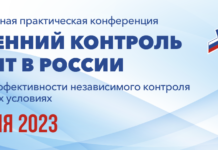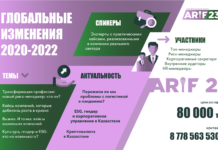Наши популярные онлайн курсы
Can 17 risk managers double their money in just 2 days with no luck and using only quantitative risk analysis? Find out in this short case study.
The problem
To test how well quantitative risk analysis performs I wanted a real life situations, where odds were known and the stakes were high. National lottery looked like a perfect candidate for a group of risk managers to make some money while measuring risks and making risk-based decisions.
Here is some context:
- lotteries are an excellent field for risk analysis since the probabilities and range of consequences are known
- in Russia, as in most countries of the world, lotteries are strictly regulated, reducing the counterpart risk. There is a rule when a large amount accumulates, several times a year it is divided among all the winners. This is called roll-down draw.
- if no one takes the jackpot before or during the roll-down, then the whole super prize is divided between all other winners
- so the probability of winning is the same as usual, but the winnings for each combination can be significantly higher if no one wins the jackpot.
And so we set out to test our risk management skills in a game of chance.
The team
Russia has almost 145M population and yet the risk community is relatively small. And while we have 1000+ members in our online risk management community, very few apply RM2 and use quantitative risk analysis to support business decision making.
So, it wasn’t difficult finding approx 10 people who were good risk managers and good quants at the same time. We created a whatsup chat and were waiting for the opportunity to make some money using quant risk analysis.
The opportunity
The opportunity arrived on 19 November, the national lottery announced a roll-down draw happening in 2 days. Last time when we modelled the lottery, it took us 11 days, so this was going to be a big challenge to do the same thing in just 2 days. First response was to ignore it, but that’s system 1 thinking, so we decided to do some quick math to see if it would be worth it.
Red team
Since this is a risk management case study. We split the group into red and blue teams. The read team did quick top down analysis to see if the expected mean return was positive. First we had to test if the game was even worth playing.
Using the VoseHypergeoProb function in the ModelRisk full version we were able to quickly confirm that the game had positive expected return, meaning it was worth the time. We could also estimate that the risk was about 20%.

Blue team
At the same time, blue team was doing bottom up risk modelling, testing various strategies to see what is expected return (80% confidence interval), what is the probability of loss and how much would we lose if were unlucky.
Ironically this risk analysis taught me that when playing lottery it’s not about you being lucky or unlucky, it’s how lucky or unlucky other 2 million players are.
The preliminary results were in:
- approx 22% probability of losing up to 80% of invested capital
- approx 78% of winning
This is quite a high risk and each team member would need to invest within their own personal risk appetite. Last time we played the probability of losing was 9.8%, this time it is more than double the risk.

The blue team then went on to test different investment strategies trying to reduce the uncertainty, effectively reducing the range of possible positive outcomes. We were lucky to have some amazing mathematicians in the team, who managed to reduce uncertainty to 80% profit (P22) to 137% profit (P95). The risk remained the same approx 22%.

Risk management at its finest
The selected strategy was truly risk management, at the minimum possible risk (can’t be lower than 22%) we on average would double our money, however there is less than 5% probability that we would more than double our money. So, none of us would probably become millionaires but we do have a good chance of getting great returns.
We then set out to manage other risks:
- each member of the team signed a disclosure agreement, stating they understood the risks and we fine with the strategy selected
- the treasurer collected the money. Given the much higher risk than before, we ended up collecting half of the amount we used to play in the previous game. This is a good example of risk and reward balance
- as always operational risks were the highest and I take my hat off to the amazing IT team we had who helped automate the strategy execution as much as was physically possible, creating controls and trying to minimise the human error as much as possible
With only 2 days available to develop and execute the strategy (compared to 11 last time), it was sleepless nights but so rewarding when we had everything set up with few hours still left to spare.
The results
On 21 November at 11pm we were watching the game to find out just how well we did. With more than 20% risk and 80% of the capital at risk, I admit I felt pretty anxious.

Drum roll….
You guessed it, we won.
Our actual return was close to 162% on the money invested after taxes (or 62% profit after fees and taxes). This is actually at the lower boundary of our 80% confidence interval, so you can say we were unlucky, or rather 59 out of the other 2 million players were lucky. Not bad in just 2 days.
Lessons learned
Back testing is critical for any kind of risk analysis. Our back test showed that we underestimated the number of other players, our VosePERT distribution had an upper boundary of 2M, which was below actual. Our calculations were otherwise quite accurate.
We also proved that a simulation can be designed and executed within just 2 days. And we found new strategies for reducing uncertainty that we will try on future games.
Good luck solving this puzzle with a heatmap :))

































